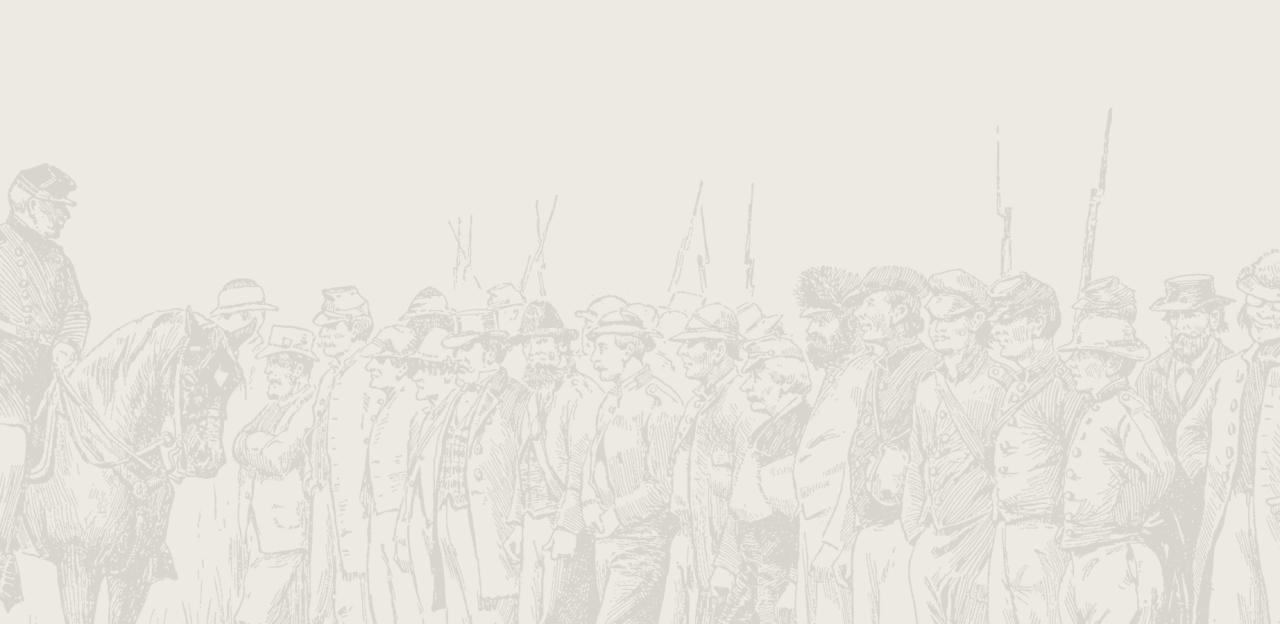Harpers Ferry

The Battle of Harpers Ferry
The stage for the Battle of Harpers Ferry was set in early September 1862, when Gen. Robert E. Lee opened the Maryland Campaign, attempting draw the fighting out of war-torn Virginia. Lee hoped for a decisive victory on Union soil that would bring European recognition to the Confederacy and rally secessionist Marylanders to his flag. Crossing the Potomac River using the fords near Leesburg, Lee expected the Union army garrisons at Harpers Ferry and Martinsburg, 20 and 40 miles upriver, to evacuate when the Army of Northern Virginia moved into Maryland. “I have no doubt they will leave that section,” Lee confidently told President Jefferson Davis on September 5. Those Federal troops were ordered to remain, however, and Lee was now faced with 14,000 Yankees along his lines of supply and communication through the Shenandoah Valley.
Knowing that Maj. Gen. George B. McClellan’s Army of the Potomac was in pursuit, Lee ordered a bold maneuver. On September 9, while encamped near Frederick, he issued Special Order 191, an audacious plan that involved splitting his army apart. James Longstreet’s wing would continue west into Maryland, while a division under D. H. Hill covered the gaps in South Mountain, preventing the Union army from following Longstreet. Meanwhile, Jackson, with six of Lee’s nine infantry divisions, would march to Martinsburg, capture the garrison there, and invest Harpers Ferry by September 13. Once these objectives were accomplished, the Confederates would reunite in Maryland.
The Union commander at Harpers Ferry, Col. Dixon S. Miles, infamous for his drunkenness during the Battle of Bull Run, began preparations to defend Harpers Ferry. The topographical features of the town rendered it nearly indefensible. Surrounded by high ground on three sides, a successful defense relied on holding Bolivar Heights, Maryland Heights, and the 1,200-foot Loudoun Heights. Disregarding the advice of his subordinates, Miles divided his 12,000 men into four brigades, with the main force tasked with defending Bolivar Heights, a ridge two miles west of town on the southern bank of the Potomac. Up on Maryland Heights, Miles deployed his weakest brigade that contained many troops that had not yet seen battle. On Camp Hill, a gentle slope outside the town, Miles posted a brigade of mostly untrained militia. Miles ignored Loudoun Heights, convinced that the oncoming Confederates would be unwilling or unable to maneuver artillery up the steep rise.
Jackson’s 14,000 men left Frederick on September 10, and fighting began two days later on Maryland Heights under Gen. Lafayette McLaws. Many of the Union troops defending the heights had been in the army only a few days and were no match for the seasoned veterans of Brig. Gens. Joseph Kershaw and William Barksdale’s veteran brigades. At 9:00 a.m. on September 13, McLaws’ men advanced up the steep slopes and pushed back the defenders. Some Federal troops held against repeated assaults until a Confederate flanking maneuver by Barksdale’s Mississippians caused the Yankees to fall back down the heights. McLaws placed heavy artillery on the captured ground, threatening both Bolivar Heights across the river and Camp Hill below.
That same day, Confederate Gen. John G. Walker’s division reached the summit of Loudoun Heights unopposed and planted more Confederate guns there. The remainder of Jackson’s men, successful in chasing the Yankees out of Martinsburg, were about three miles west of Bolivar Heights. Realizing he was now surrounded on three sides, Miles wrote McClellan that if the garrison was not supported within 48 hours, he would have to surrender.
Miles didn’t have 48 hours. Early the next morning, well-placed Confederate artillery on Maryland Heights shelled the Union positions. The inexperienced Yankee gunners returned fire, but their shots were haphazard and poorly aimed. At 3:00 p.m. A.P. Hill’s Division advanced toward the Federals on Bolivar Heights, meeting stiff resistance. With the three major heights surrounding Harpers Ferry now firmly in his possession, Jackson ordered additional artillery to be brought up that evening in preparation for a fierce strike on the morning of the 15th.
During the night, Jackson brought up five batteries from Hill’s division and placed them on Maryland Heights and around the base of Loudoun Heights. Coordinating one fierce strike, Jackson ordered an infantry assault for 8:00 a.m. on the 15th, sending A.P. Hill forward as his batteries enfiladed the Union left. As guns began firing, most of Miles’s infantry took shelter in ravines and tranches. Jackson ordered Hill’s guns to cease firing, and ordered the infantry to storm the Federal works. Union artillery was rapidly losing ammunition. Believing the situation to be hopeless, Miles called a meeting of his commanders in a nearby home. As surrender was debated, a shell burst through the wall, shattering Miles’ left leg and mortally wounding him. The garrison surrendered a short time later. The Union capitulation at Harpers Ferry of some 12,000 soldiers was the most Federal prisoners taken throughout the war.
Jackson sent a courier to Lee telling him of the victory, and received in reply a message to get his men quickly to Sharpsburg, where Lee had decided to make a stand with the rest of the army behind Antietam Creek. Jackson left Hill to parole the prisoners and take possession of 73 pieces of artillery, 13,000 small arms, and large quantities of wagons and supplies. Hill’s division then left Harper’s Ferry, arriving in Sharpsburg late on September 17, just in time to play a decisive role at the Battle of Antietam.


